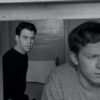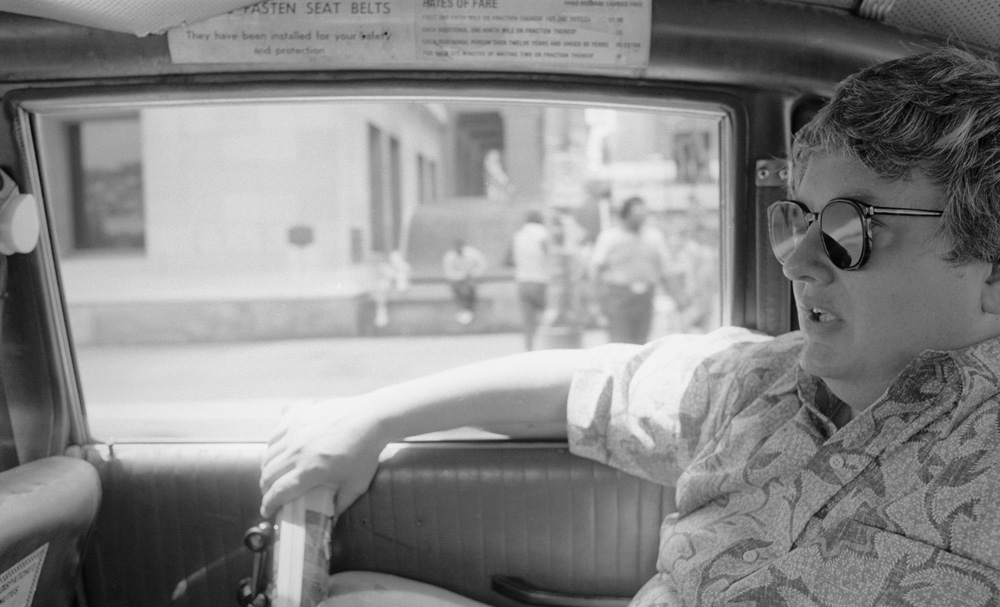As one of the most compassionate filmmakers around, Steve James is used to having the stories he tells inspire others to share theirs with him. But after making a film about Roger Ebert, he’s spent the past six months since its premiere in Sundance listening more often than talking about it himself as he’s been interviewed by the very people who were inspired to go into film criticism by his subject or were colleagues of the late Chicago Sun-Times writer.
“A guy told a wonderful story today about how he watched the show with his parents and it was the one time he remembered when he was younger that his parents treated him like an adult,” says James, during the press day for “Life Itself” in Los Angeles. “I feel really good about the film that we’ve made. I feel it stands on its own merits, but you don’t get this kind of response to a film that we’ve gotten unless people really care about the subject and this is one of those subjects that people really care about.”
Whether it’s been death row inmates (“At the Death House Door”), a wayward young man to whom the filmmaker was once a Big Brother (“Stevie”), or kids with aspirations of lifting their families out of the projects as talented high school basketball players (“Hoop Dreams”), James has gotten people to care about the subjects of his films no matter where they came from. Yet of course, in this case, the Pulitzer Prize-winning Ebert was the preeminent author of his own story, particularly after he was afflicted with papillary thyroid cancer in 2002, which left him without the ability to speak once initial attempts to eradicate it proved unsuccessful and though he was always prolific — a natural newspaperman, as is said repeatedly in “Life Itself” — blogging became as natural as breathing.
So when James was approached by producers Steven Zaillian and Garrett Basch to turn Ebert’s 2011 memoir into a documentary, he faced a challenge even greater than filming his subject in what would turn out to be his final days – how to reflect Ebert’s personal voice while bringing his colleagues and friends into the mix to tell of the influence he had on so many, whether through the television show he started with the late Gene Siskel or in the life he shared with his wife Chaz Ebert. The result is something that illuminates Ebert’s prose, which already danced off the page, while bringing the things that only others could see to vivid light, demonstrating the exuberance with which he approached everything from the movies he reviewed to his battle with alcoholism to ultimately building a new forum for himself and for film criticism as a whole online. Shortly before the film opens theatrically, James spoke about how “Life Itself” led him down a new path as a filmmaker, how Ebert’s memories informed the style of the film and the unusual position of having an out-and-out crowdpleaser on his hands.

It was new. And because of that, it was exciting because I like to do different things and if you’ve seen some of my other work, I think a lot of people tend to think of me as a certain kind of filmmaker who is mostly vérité, following people around and capturing the drama of their lives. I’ve done other kinds of films, but I’d never done a biography like this and certainly not someone famous like this or with a memoir that we’re basing the film on. But I liked it because it’s a beautiful book and [Ebert] gets his arms around his life in the memoir, which really helps me get my arms around his life in the film, even though everything that’s in the memoir clearly can’t be in the film. Reading the memoir, I loved the writing of it so much, I wanted to have Roger narrate the film much like it’s a memoir, the biggest difference of course being that in memoir, you’re only hearing his voice and in the film, you’re hearing from other people. But I love the tension between those two.
Was it interesting to do something about a public person where people feel he belongs to them?
It was. Fortunately, I didn’t really think too deeply about that until well into the process or I might not have even wanted to attempt it because Roger is so beloved and important. Where it really hit me was right after he died. We were part-way into shooting. We still had quite a bit of shooting left to go with interviews, at least, and I remember thinking, “oh my God. I don’t know who else is going to make a film about Roger Ebert, but this is the only one in which he’ll be a part of it.” I always feel a responsibility and put a lot of pressure on myself to make the best film I can make, but that was an added level of pressure I started to feel, then as we were completing it, it dawned on me that there would be all these people writing about the movie who loved him and critics reviewing the movie that loved him or knew him and I’m not used to that, either. I’m used to doing films about people you’ve never heard of, so that what you know about them comes from me, not your own reading or experience, so it all was a little scary. [laughs]
Has it been interesting to have that response? I’m sure doing a press day like the one we’re doing now, you’ve heard from a bunch of people who had their own memories of Roger.
I’ve heard so many stories from everywhere. Whenever anybody finds out I’m doing a film on Roger Ebert, so many people seem to have personal stories about Roger and personal connections. They wrote him. He wrote them back. There’s Ramin [Bahrani, the director of “Chop Shop,” who asked Ebert to attend a screening of his film at Sundance] in the film. They bumped into him at a film festival and he spent 10 minutes talking to them, asking them what movies they had seen and they had liked.
I’ve heard you say you were happy when Ramin and Errol Morris were able to bring that perspective of a filmmaker who benefitted from the support of Roger since you wouldn’t have to share your own experience with “Hoop Dreams,” which famously was one of the most celebrated films ever on “Siskel & Ebert.” Was it was actually a help or a hindrance to tell an objective story when you had that personal experience?
Actually, I didn’t come at it necessarily objectively, but I didn’t come at this story with any great prior knowledge of Roger outside of his significance as a film critic. Now, that’s big, but I wasn’t his friend. We didn’t hang out. I didn’t run into him all that often over the years even though we’re both from Chicago. So I think all of that actually served the film because making the film was very much a discovery process of who he was and quizzing people about him. It was all new to me, or a lot of it was. And it also meant that I wasn’t beholden to Roger out of friendship to not include things that maybe a friend might’ve said. Like when [“At the Movies with Ebert and Siskel” producer] Nancy De Los Santos says, “He could be a real big baby when he didn’t get his way,” if I was his close friend, I could think like “Ehhh, I don’t think we need to put that in there” or that he was with a prostitute. I didn’t set out to do an exposé of Roger. I admire him or I wouldn’t have made the film. But I also wanted it to be the full man. And he wanted that.

I loved that technique and applying it to the film, and I’ve done films where we have archival videos and photos, but not when it was such an important aesthetic creative element of this film. Again, that idea was inspired by Roger. He talked in his memoir about how the memories keep flooding back of his life and that was the basis of the memoir, the way he unfolded that. So I tried to think of a good visual equivalent to that. He was very good about keeping scrapbooks of his clippings and photo albums, so I loved the idea that those are the repositories of memories in our daily lives, the physical manifestations of that.
This may be an inappropriate parallel, but having spent time with Death Row inmates for “At the Death House Door,” was it interesting to see how someone else approached the end of life?
I don’t think it’s really a far-fetched question at all. “At the Death House Door,” like you say, is very different, but it does have elements of how people look the end in the face and what they do about it and it certainly was what [Carroll] Pickett, the pastor, was grappling with every time he sat with an inmate on his way to the lethal injection and people taking stock of their lives and who they were and how they faced that final moment. That is absolutely something that film’s about – it’s about many other things, but it’s absolutely about that. And this film is about many other things, but it’s also very much about the way in which Roger stared down the end and did it with great fortitude and even humor and grace. That made it quite inspiring for me and anybody that was around that, the way in which he handled it was remarkable.
You’ve had some funny moments in your films before but they’re often organic. Was it nice to have humor as a tool for this one?
Oh my God, yes. One thing I felt strongly about starting the project based on his memoir and starting to do research is if this film is not funny, we have failed. Once the story we were following in the present ends with his death, it became even more vital. But even that aside, Roger’s life was full of humor and hubris and competitiveness and generosity. He was many things and in order to feel his essence, it had to have all of that in it. It had to have all the qualities of who he was and how he engaged in life. Humor was such a big, big part of it, and that’s one of the reasons I enjoy watching this film with audiences. It’s a good audience film because the audience really does laugh, then they get very quiet, then there are tears, then they’re laughing again. It really runs the gamut of emotions that’s one of the reasons I really hope people will go out to the movie theater and watch it with a group of people because I really feel that’s the best way to watch it.
“Life Itself” opens in limited release on April 4th. A full list of theaters can be found here. It is also available on demand through a variety of channels that can be found here.




